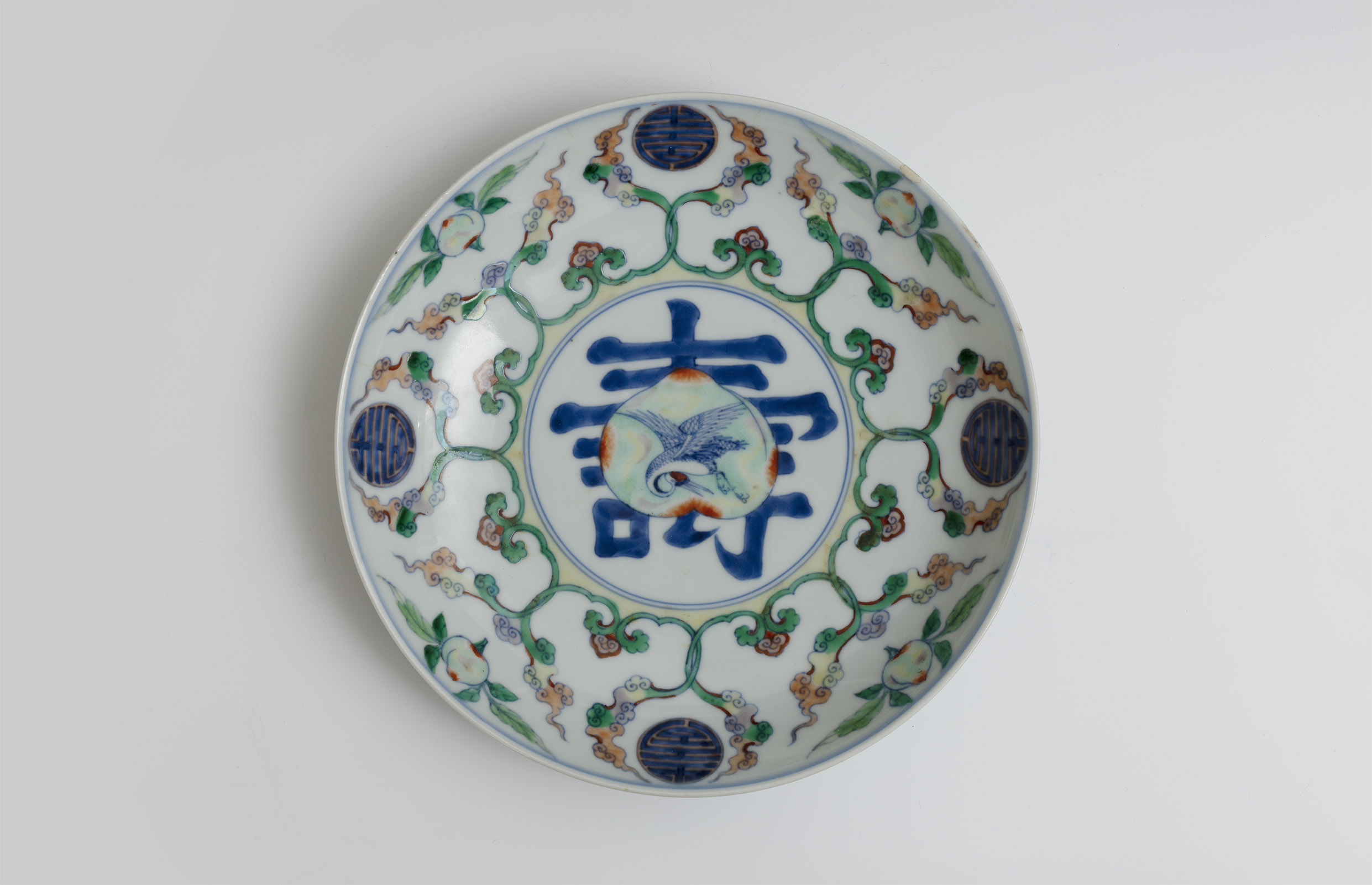
Contrasting-colors (Doucai) Plate in Round Design of Character Shou (Longevity)
1700s Emperor Kangxi’s Reign (1662-1722) of the Qing Dynasty
Longevity is among the quintessence of Chinese traditional culture. It has always been said that longevity comes first among five blessings. Looking through Chinese history, one can be impressed by Chinese people’s eager pursuit of longevity. To express the love, the character “Shou” is embroidered on clothing, engraved on jewelry, burned on porcelain, carved on furniture… The round design is one of the common patterns of Shou, the continuous lines of which imply that life will last forever. This fine implication is consistent with ancient people’s idea that only family reunion and harmonious coexistence can lead to longevity, so it is quite popular.
Since initiated in Emperor Yongzheng’s reign (r. 1722-1735) in the Qing Dynasty, this kind of plate has been produced throughout the dynasty, known as the classical product of the imperial kiln then. With open mouth and full belly, the plate has restrained round bottom, white base, green glaze layer and is decorated entirely with the technique of Doucai (contrasting colors). The main body of the design features a Chinese character “Shou” written with cobalt pigment under the glaze, at the center of which lies a plump peach painted with red and yellow. A blue-and-white crane is looking back at the heart of the peach. Pattern of woven clouds spreads all over the inner wall of the plate, scattered with flat peaches and round design of “Shou”. Bamboo, rock and lucid Ganoderma are depicted on the outer wall. At the center of the bottom, we can see “Made in Emperor Kangxi’s Reign in the Qing Dynasty” in regular script with blue-and-white pigments. The six characters are arranged in three rows, simple and unsophisticated.
The plate is regular and neat in shape, fine in base and glaze layer, and simple and elegant in the hue of blue and white. Other colors like red, yellow and green present excellent sense of depth. The designs of “Shou”, flat peach, lucid Ganoderma and crane are all symbols of longevity. Purport of the plate, namely offering birthday congratulations, is directly expressed via the progressive layers of “Shou”, flat peach and the crane. Judging from the commonly used inscription of porcelains produced by the imperial kiln in late Emperor Kangxi’s reign, conclusion can be drawn that it was made exclusively for celebrating the 60th anniversary of Emperor Kangxi His Majesty. It’s precious due to its special historical value and the exclusive presence in Kangxi Period.
(Edited by Li Hanning & Yang Zhige, 2021)

